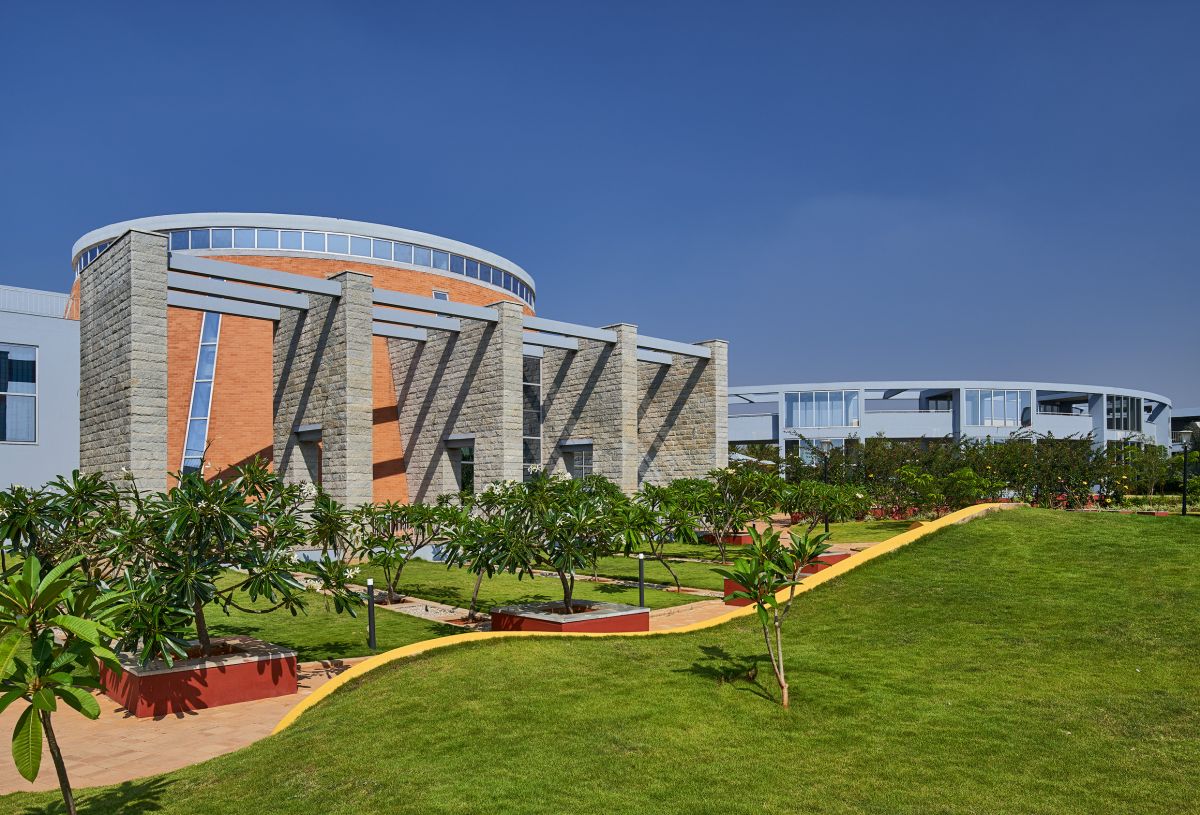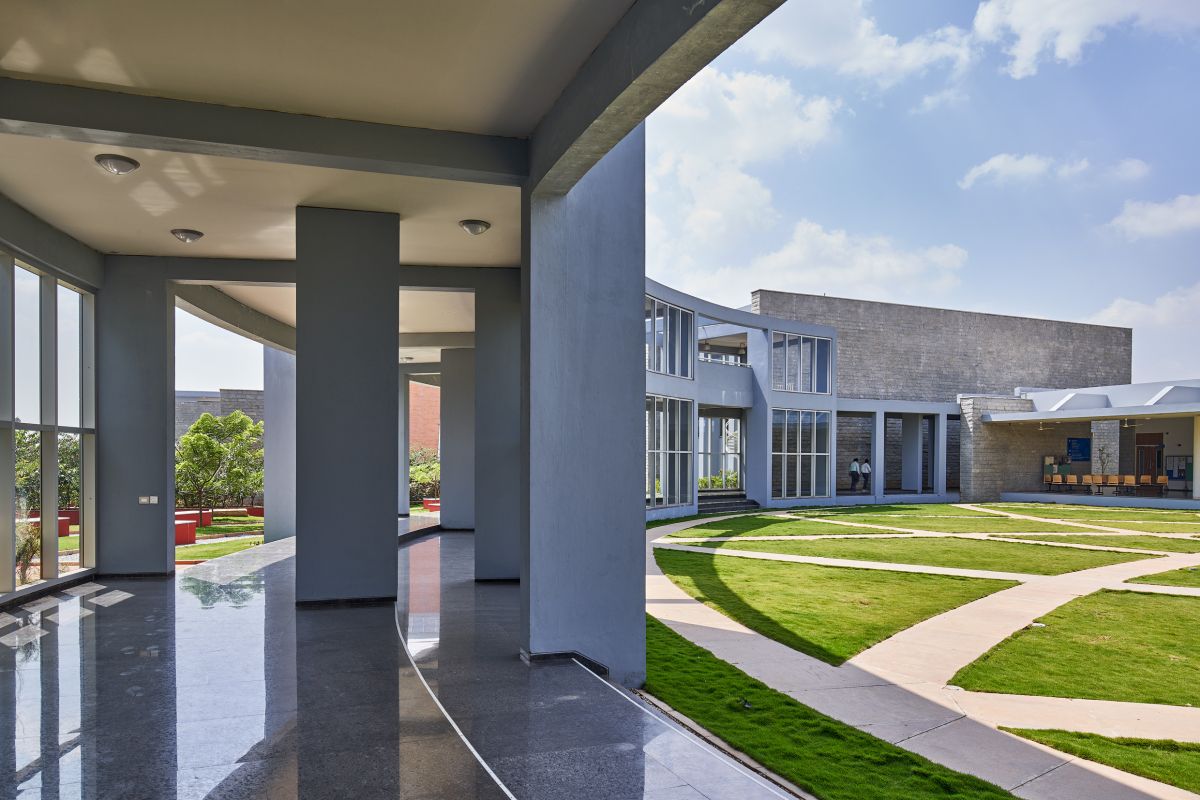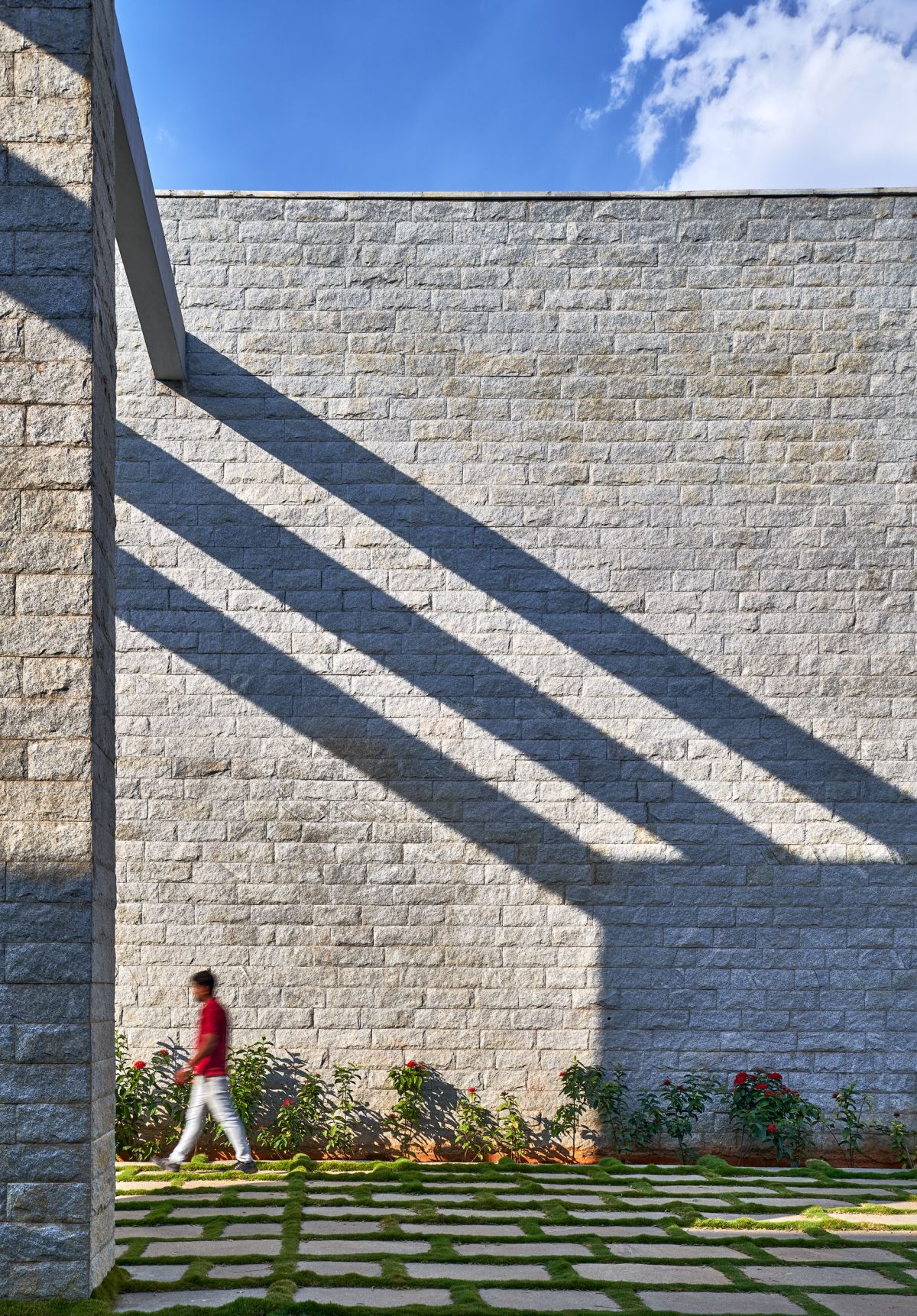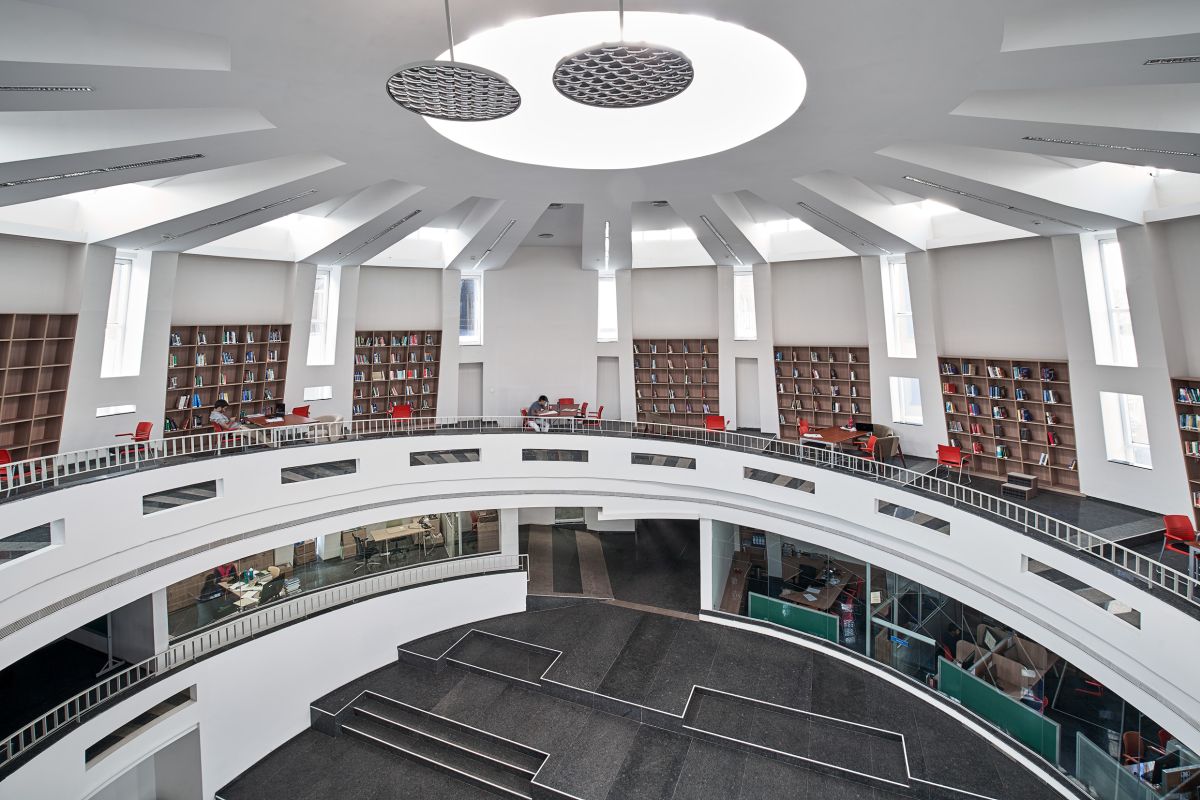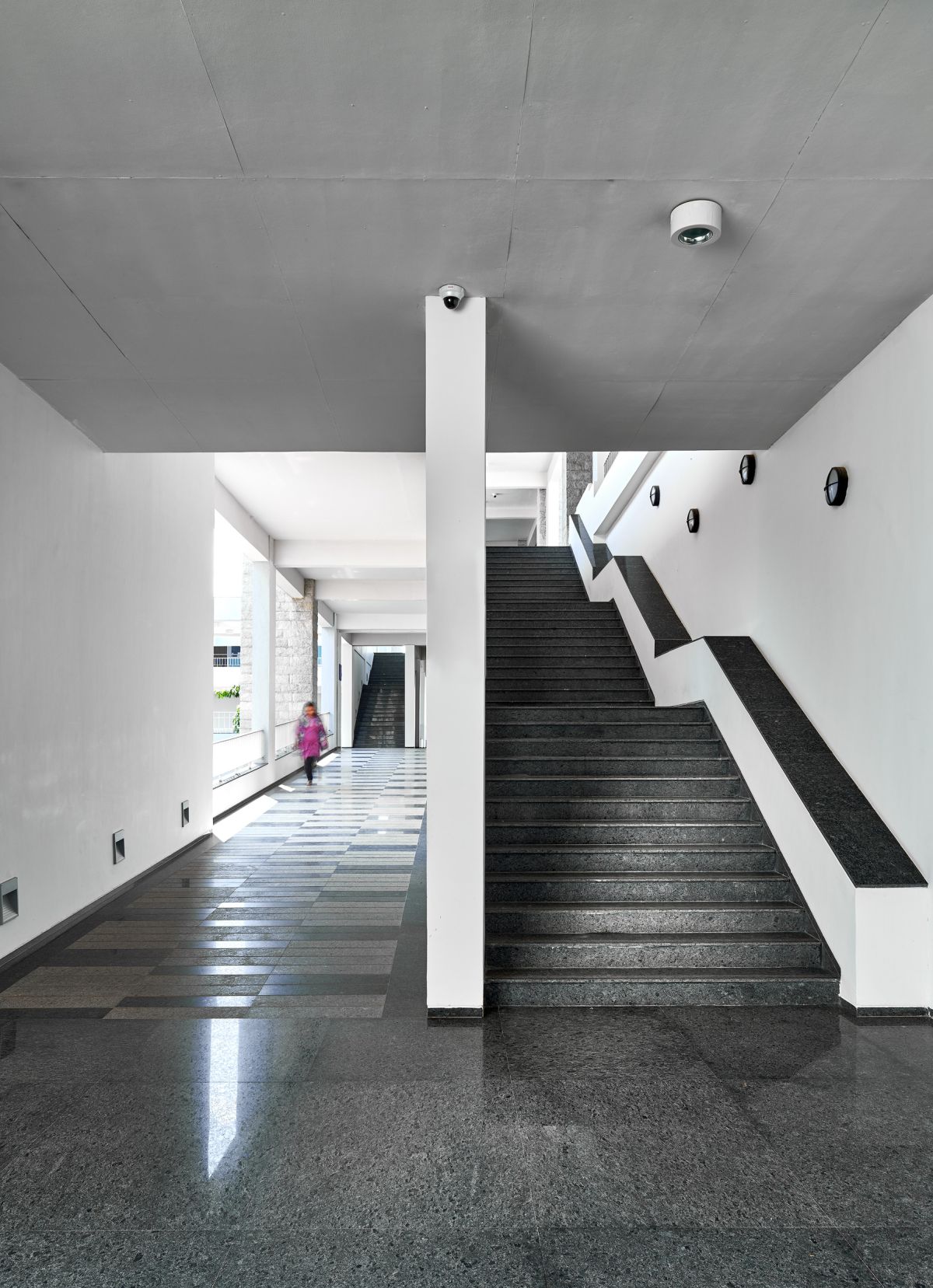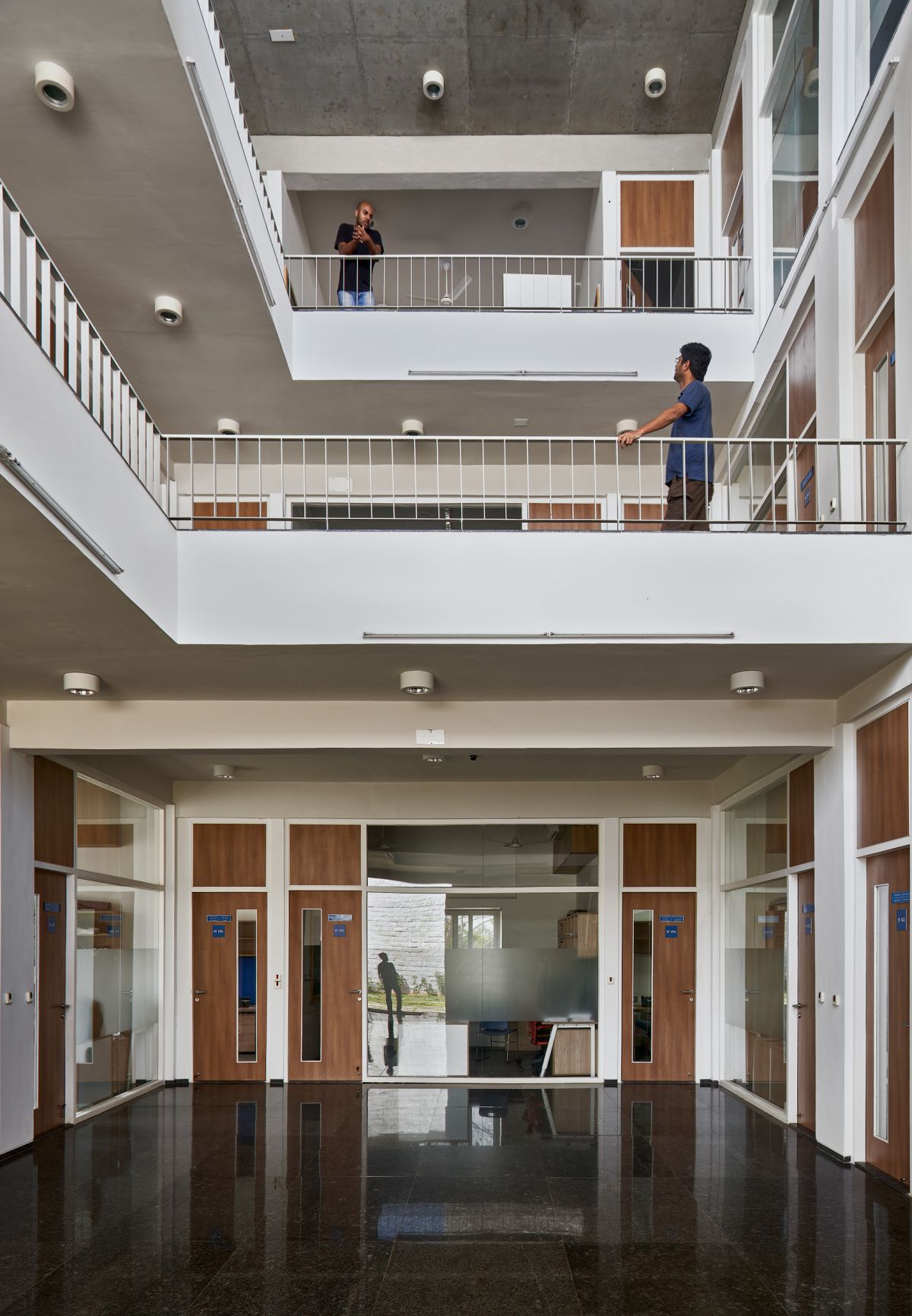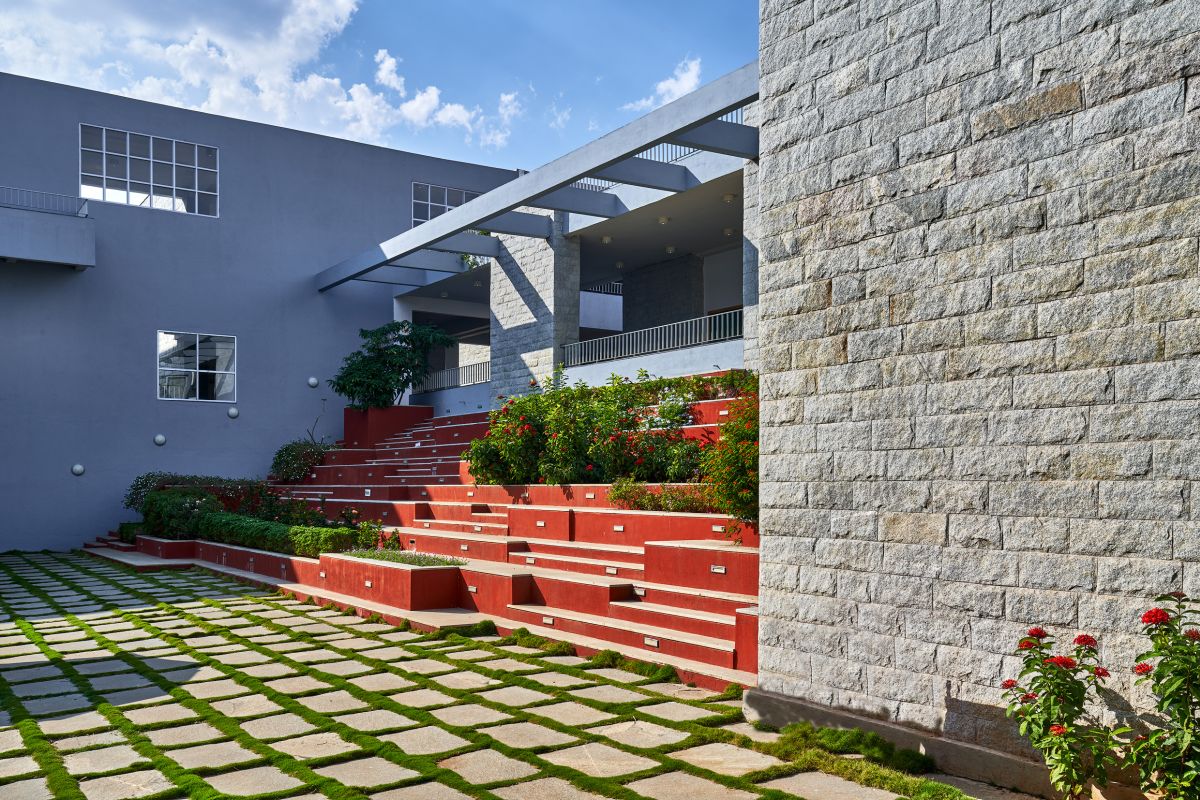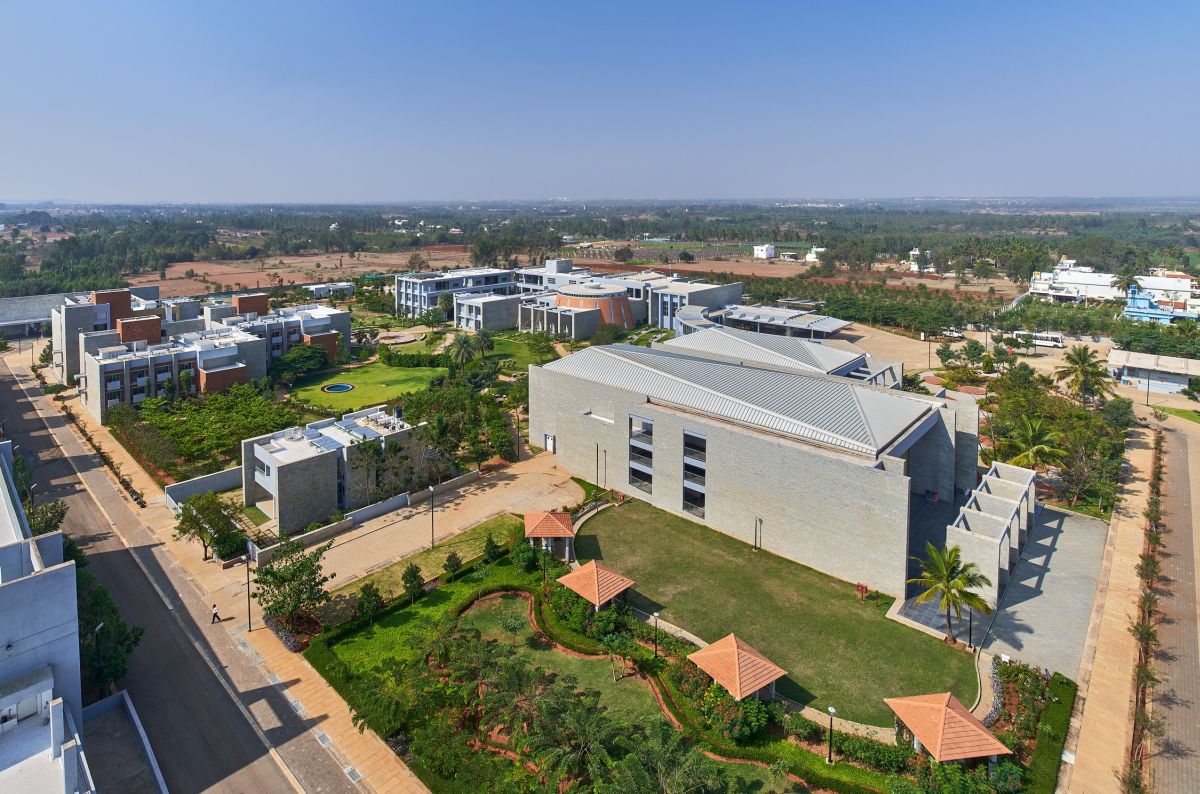Planned as an international science hub that would transform scientific research and education in India, the design of the TIFR-ICTS campus reveals an innate understanding of a high-tech institution in how it accommodates large open grounds for collaboration while providing spaces that foster focused scientific studies. The master plan brings together many different functions and users (resident researchers, office staff, visitors et al).
The various functions have been strategically arranged to ensure a natural and efficient flow within the site for each of these user groups. A diagonal axis of open spaces defines the masterplan and functions as a social, fluid space that provides coherence; this life-giving axis allows access to individual research units, while creating pockets for recreation and informal meetings. A series of horizontally-laid buildings, each a mere 5-min walk from the centre of the site, lends itself to the intimate character of the campus.
The overall program has been spaced over separate buildings, punctuated by courtyards of various sizes that ensure every structure is breathable, light, and takes advantage of the climate and natural landscape of Bangalore. The academic and seminar blocks flank the two ends of the entrance plaza connected via a gallery walk, creating an active edge at the entrance.
Contrasting the otherwise grid-like planning for the entire campus, the Library block is designed to follow an organic conical form with a ramp inscribed along its interior walls to create a large open atrium. Much like its inspiration – the Guggenheim Museum – the curves of the exterior, creates a more dramatic effect in the interiors. A large oculus, roof lights coupled with reflectors and wall cutouts grant the space with ample natural light through the day. Besides the dynamic structure itself, the ICTS campus challenges the traditional library culture and reimagines it as a social forum, staging a wide range of experiences and inspiration. Bookshelves and reading nooks are arranged around the ramp that spirals up around the central atrium of the library – its heart. This spiral creates varied study environments allowing researchers to either collaborate in the heart of the library or withdraw to more quiet and calm areas along the edges.
The design of the ICTS campus explores contemporary design using regional references and local materials to define the built form. A restrained selection of natural materials, largely consisting of Sadarhalli granite, wire cut bricks, and exposed concrete, blends harmoniously with the landscape. The project integrates passive design principles with strategies for energy efficiency and water conservation.
Designed as a series of low-rise structures integrated with the landscape, air conditioning is limited to large indoor areas like the library and classroom. All common areas are naturally ventilated. Planned tree planting along all the edges of the building and adjunct to the common areas ensure shading of the building, thereby reducing heat gain within the building. Further, the wall to window ratio is maintained and limited to 10-15% along all the edges.
This project proves that sustainable development outcomes and new construction methods can coexist with more traditional metrics for affordability, operational efficiency, and user comfort.
Project Facts –
Location: Bangalore
Site Area: 17 acres
Built-up Area: 2,20,000 sqft
Year of Completion: 2017

